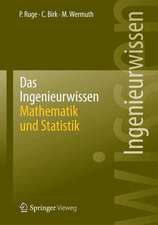Perspectives of Neural-Symbolic Integration: Studies in Computational Intelligence, cartea 77
Editat de Barbara Hammer, Pascal Hitzleren Limba Engleză Hardback – 11 sep 2007
| Toate formatele și edițiile | Preț | Express |
|---|---|---|
| Paperback (1) | 1218.69 lei 6-8 săpt. | |
| Springer Berlin, Heidelberg – 25 noi 2010 | 1218.69 lei 6-8 săpt. | |
| Hardback (1) | 1223.55 lei 6-8 săpt. | |
| Springer Berlin, Heidelberg – 11 sep 2007 | 1223.55 lei 6-8 săpt. |
Din seria Studies in Computational Intelligence
- 20%
 Preț: 449.37 lei
Preț: 449.37 lei - 20%
 Preț: 1158.26 lei
Preț: 1158.26 lei - 20%
 Preț: 986.66 lei
Preț: 986.66 lei - 20%
 Preț: 1452.76 lei
Preț: 1452.76 lei - 20%
 Preț: 168.78 lei
Preț: 168.78 lei - 18%
 Preț: 1112.30 lei
Preț: 1112.30 lei - 20%
 Preț: 565.38 lei
Preț: 565.38 lei - 20%
 Preț: 649.28 lei
Preț: 649.28 lei - 20%
 Preț: 1047.73 lei
Preț: 1047.73 lei - 20%
 Preț: 1578.96 lei
Preț: 1578.96 lei - 20%
 Preț: 643.50 lei
Preț: 643.50 lei - 20%
 Preț: 657.49 lei
Preț: 657.49 lei - 20%
 Preț: 993.28 lei
Preț: 993.28 lei - 20%
 Preț: 990.80 lei
Preț: 990.80 lei - 20%
 Preț: 989.96 lei
Preț: 989.96 lei - 20%
 Preț: 1165.69 lei
Preț: 1165.69 lei - 20%
 Preț: 1444.52 lei
Preț: 1444.52 lei - 20%
 Preț: 1041.96 lei
Preț: 1041.96 lei - 20%
 Preț: 1047.73 lei
Preț: 1047.73 lei - 20%
 Preț: 1046.06 lei
Preț: 1046.06 lei - 18%
 Preț: 2500.50 lei
Preț: 2500.50 lei - 20%
 Preț: 989.13 lei
Preț: 989.13 lei - 20%
 Preț: 1165.69 lei
Preț: 1165.69 lei - 20%
 Preț: 1164.05 lei
Preț: 1164.05 lei - 20%
 Preț: 1042.79 lei
Preț: 1042.79 lei - 20%
 Preț: 1460.19 lei
Preț: 1460.19 lei - 18%
 Preț: 1403.52 lei
Preț: 1403.52 lei - 18%
 Preț: 1124.92 lei
Preț: 1124.92 lei - 20%
 Preț: 1039.47 lei
Preț: 1039.47 lei - 20%
 Preț: 1008.11 lei
Preț: 1008.11 lei - 20%
 Preț: 1045.25 lei
Preț: 1045.25 lei - 20%
 Preț: 1275.42 lei
Preț: 1275.42 lei - 20%
 Preț: 1040.32 lei
Preț: 1040.32 lei - 20%
 Preț: 988.32 lei
Preț: 988.32 lei - 20%
 Preț: 1169.79 lei
Preț: 1169.79 lei - 20%
 Preț: 1162.37 lei
Preț: 1162.37 lei - 20%
 Preț: 1059.26 lei
Preț: 1059.26 lei - 20%
 Preț: 1164.05 lei
Preț: 1164.05 lei - 20%
 Preț: 1166.52 lei
Preț: 1166.52 lei - 20%
 Preț: 1459.38 lei
Preț: 1459.38 lei - 18%
 Preț: 1005.74 lei
Preț: 1005.74 lei - 20%
 Preț: 997.38 lei
Preț: 997.38 lei - 20%
 Preț: 1055.94 lei
Preț: 1055.94 lei - 20%
 Preț: 1284.47 lei
Preț: 1284.47 lei - 20%
 Preț: 994.08 lei
Preț: 994.08 lei - 20%
 Preț: 1048.72 lei
Preț: 1048.72 lei - 20%
 Preț: 1066.02 lei
Preț: 1066.02 lei - 20%
 Preț: 943.78 lei
Preț: 943.78 lei - 20%
 Preț: 1173.10 lei
Preț: 1173.10 lei - 20%
 Preț: 1457.72 lei
Preț: 1457.72 lei
Preț: 1223.55 lei
Preț vechi: 1492.14 lei
-18% Nou
Puncte Express: 1835
Preț estimativ în valută:
234.14€ • 241.91$ • 194.77£
234.14€ • 241.91$ • 194.77£
Carte tipărită la comandă
Livrare economică 20 martie-03 aprilie
Preluare comenzi: 021 569.72.76
Specificații
ISBN-13: 9783540739531
ISBN-10: 354073953X
Pagini: 321
Ilustrații: XIII, 319 p.
Dimensiuni: 155 x 235 x 24 mm
Greutate: 0.61 kg
Ediția:2007
Editura: Springer Berlin, Heidelberg
Colecția Springer
Seria Studies in Computational Intelligence
Locul publicării:Berlin, Heidelberg, Germany
ISBN-10: 354073953X
Pagini: 321
Ilustrații: XIII, 319 p.
Dimensiuni: 155 x 235 x 24 mm
Greutate: 0.61 kg
Ediția:2007
Editura: Springer Berlin, Heidelberg
Colecția Springer
Seria Studies in Computational Intelligence
Locul publicării:Berlin, Heidelberg, Germany
Public țintă
ResearchCuprins
Structured Data and Neural Networks.- Kernels for Strings and Graphs.- Comparing Sequence Classification Algorithms for Protein Subcellular Localization.- Mining Structure-Activity Relations in Biological Neural Networks using NeuronRank.- Adaptive Contextual Processing of Structured Data by Recursive Neural Networks: A Survey of Computational Properties.- Markovian Bias of Neural-based Architectures With Feedback Connections.- Time Series Prediction with the Self-Organizing Map: A Review.- A Dual Interaction Perspective for Robot Cognition: Grasping as a “Rosetta Stone”.- Logic and Neural Networks.- SHRUTI: A Neurally Motivated Architecture for Rapid, Scalable Inference.- The Core Method: Connectionist Model Generation for First-Order Logic Programs.- Learning Models of Predicate Logical Theories with Neural Networks Based on Topos Theory.- Advances in Neural-Symbolic Learning Systems: Modal and Temporal Reasoning.- Connectionist Representation of Multi-Valued Logic Programs.
Textul de pe ultima copertă
The human brain possesses the remarkable capability of understanding, interpreting, and producing language, structures, and logic. Unlike their biological counterparts, artificial neural networks do not form such a close liason with symbolic reasoning: logic-based inference mechanisms and statistical machine learning constitute two major and very different paradigms in artificial intelligence with complementary strengths and weaknesses. Modern application scenarios in robotics, bioinformatics, language processing, etc., however require both the efficiency and noise-tolerance of statistical models and the generalization ability and high-level modelling of structural inference meachanisms. A variety of approaches has therefore been proposed for combining the two paradigms.
This carefully edited volume contains state-of-the-art contributions in neural-symbolic integration, covering `loose' coupling by means of structure kernels or recursive models as well as `strong' coupling of logic and neural networks. It brings together a representative selection of results presented by some of the top researchers in the field, covering theoretical foundations, algorithmic design, and state-of-the-art applications in robotics and bioinformatics.
This carefully edited volume contains state-of-the-art contributions in neural-symbolic integration, covering `loose' coupling by means of structure kernels or recursive models as well as `strong' coupling of logic and neural networks. It brings together a representative selection of results presented by some of the top researchers in the field, covering theoretical foundations, algorithmic design, and state-of-the-art applications in robotics and bioinformatics.
Caracteristici
Presents recent developments in neural-symbolic integration






















